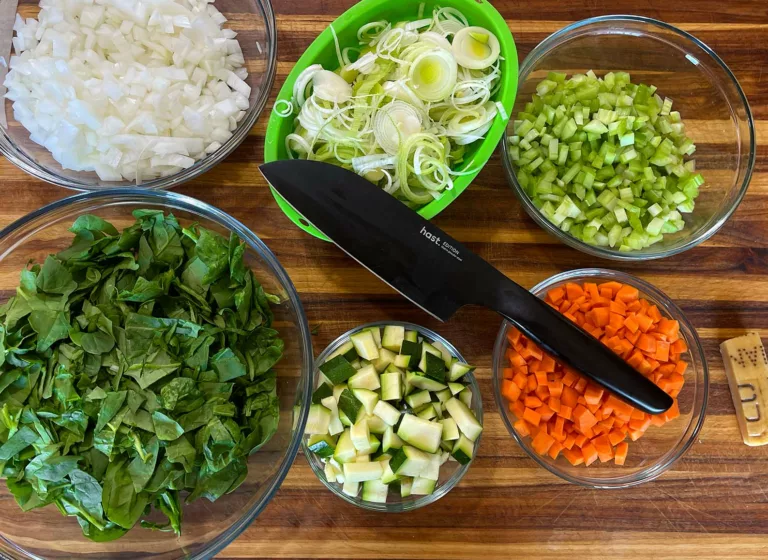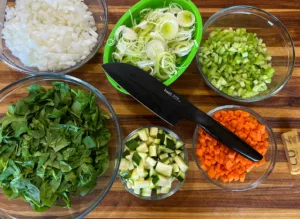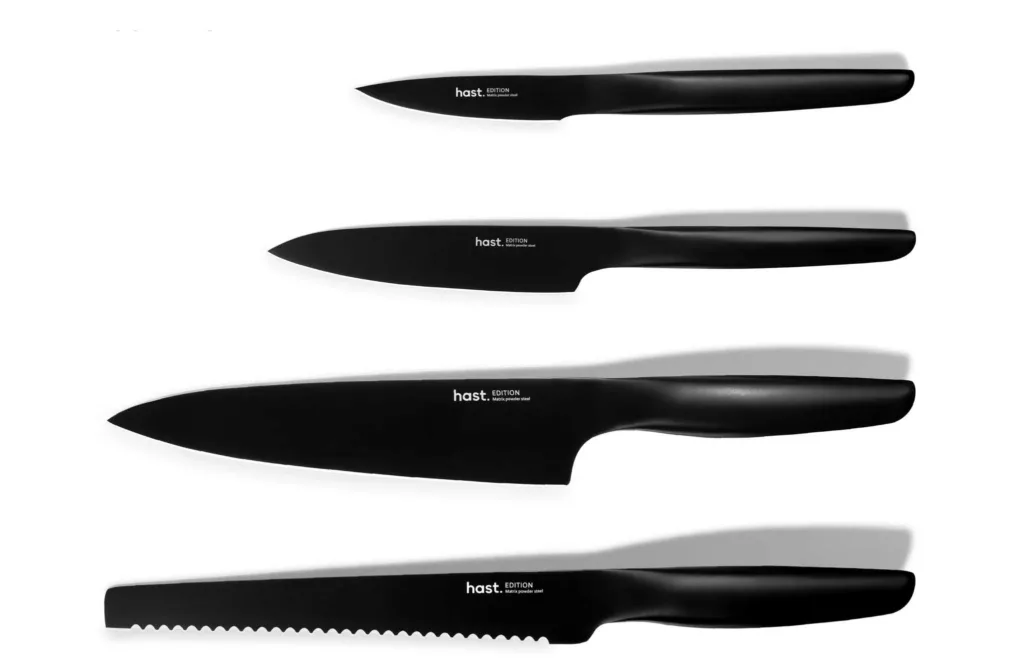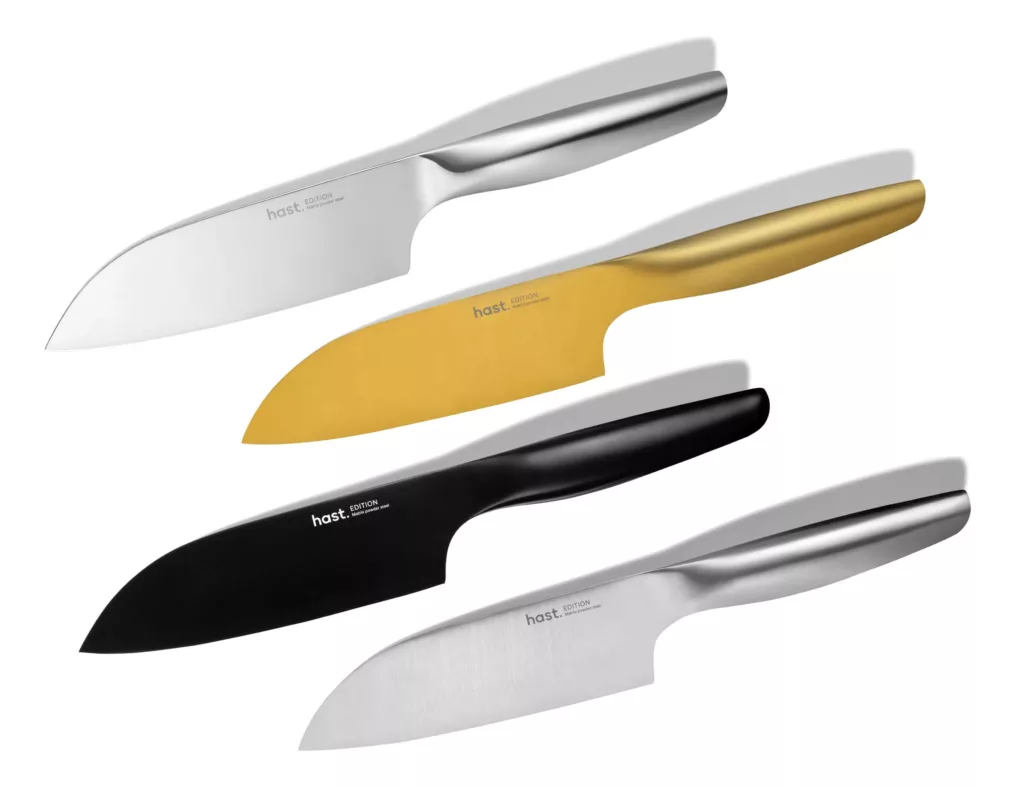Full Disclosure: Hast sent me both a santoku and a utility knife free of charge to test and review.
Save by Buying the 4-Piece Bundle!
• Comes with the pairing knife, utility knife, chef's knife, and serrated bread knife
• Available in four colors: minimal matte, matte black, bold gold, and absolute glossy
• Sleek and modern one-piece design will match an equally modern kitchen
Sizzle & Sear's Rating
Review Summary
Hast Santoku Knife Review Summary:
A Good Knife for Under $100
Priced at $99, Hast's santoku competes well with other knives at this price point.
Through my extensive vegetable and protein cutting tests, the knife never felt unsharp and overall was a joy to use.
Most soft vegetables like celery were no problem for the Hast, making it easy to achieve a uniform small dice. There was just a tiny bit of resistance when it came to piercing a tomato skin; luckily, Hast sells an 8" serrated knife. When it comes to tomatoes, I recommend using a serrated knife as the multiple sharp points on the serration make it much easier to pierce through the skin of a tomato. When cutting zucchinis, I had to adjust my technique a little bit as the blade comes to an abrupt end and there's a tiny portion of the edge that's unsharp that can tear delicate foods like zucchini. However, once I adjusted my technique, it was no longer a problem.
Cutting firm vegetables, like carrots and onions, wasn't as resistance-free as my prized Japanese gyuto, but keep in mind that knife costs 4-5x as much as the Hast. For a lot of home cooks, the improvements between the Hast and a much more expensive knife could be viewed as marginal and not worth it, so it's important to keep that in mind when shopping for knives.
With its one-piece seamless design, Hast knives are unique and aesthetically pleasing; its sleek look will match a modern kitchen well. The one-piece design also gives it an overall good build quality that eliminates points of failure. Plus, without any crevices caused by seams, Hast knives are incredibly easy to clean; something I can't say about my Japanese knife with a wooden handle that needs extra special care to ensure its longevity.
The knife is light-weight and feels balanced in the hand.
One area for improvement is in comfort; I found the handle to dig into my hand causing some minor fatigue after continuous use. However, knives are very personal and what is comfortable for one cook could be uncomfortable for another. There are lots of variables that go into the comfort of a knife, such as hand and fingers size of the user; it's best that you try out a knife before committing to it. Luckily Hast offers a 30-day money back guarantee, so you can try it and see if it works for you.
Overall, the knife got through all kitchen tasks tested and I only experienced a little resistance with some tasks. For under $100, this knife is a good deal, especially if you are looking for a knife to match a modern kitchen aesthetic.
Recommended Knife for Price Point (Under $100)
Save by Buying the 4-Piece Bundle!
• Comes with the pairing knife, utility knife, chef's knife, and serrated bread knife
• Available in four colors: minimal matte, matte black, bold gold, and absolute glossy
• Sleek and modern one-piece design will match an equally modern kitchen
Table of Contents
About Hast Knives
Hast sells a variety of knives, including an 8″ chef’s knife, a 6.3″ santoku knife, a 3.5″ pairing knife, a 6″ utility knife, a 5″ boning knife, and a 8″ serrated bread knife. Each knife has 4 color options: minimal matte, matte black, bold gold, and absolute glossy. The knives are unique because of their design; there are no seams. Instead, the knives are made from a single piece of matrix powder steel, giving them a minimalist sleek look that would match any modern kitchen.
Hast sent me both a santoku and a utility knife in matte black. Due to the versatility of the santoku, I used it for the vast majority of my tests; however, the utility knife is useful to have in the drawer for a quick cutting job.
Hast Knives Review Introduction
The bulk of my vegetable cutting tests with Hast knives was done with a minestrone recipe. Minestrone is the perfect recipe to test out a new knife as it involves cutting soft, medium, and firm firm vegetables into small dices. I also tested cutting cooked chicken, tomatoes, and pita bread when I made Serious Eat’s Halal Cart-Style Chicken and Rice with White Sauce.
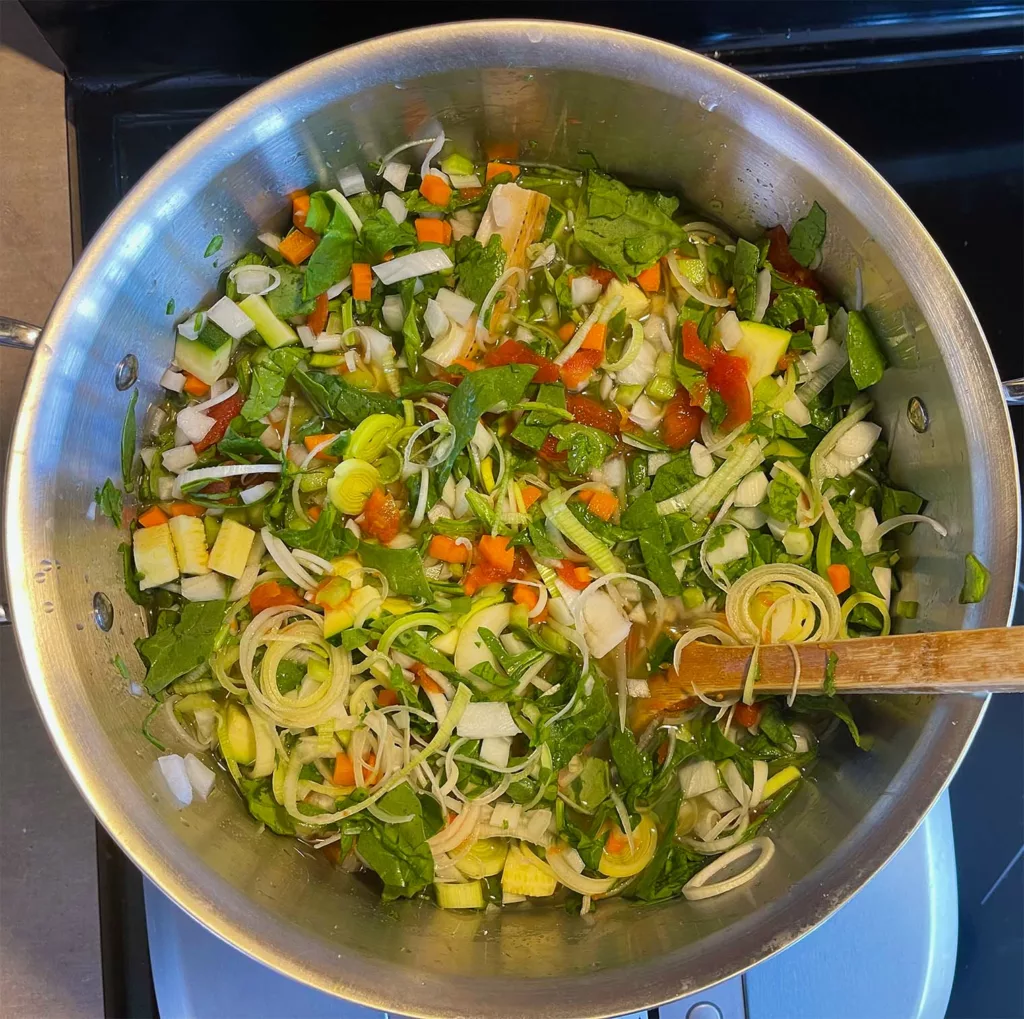
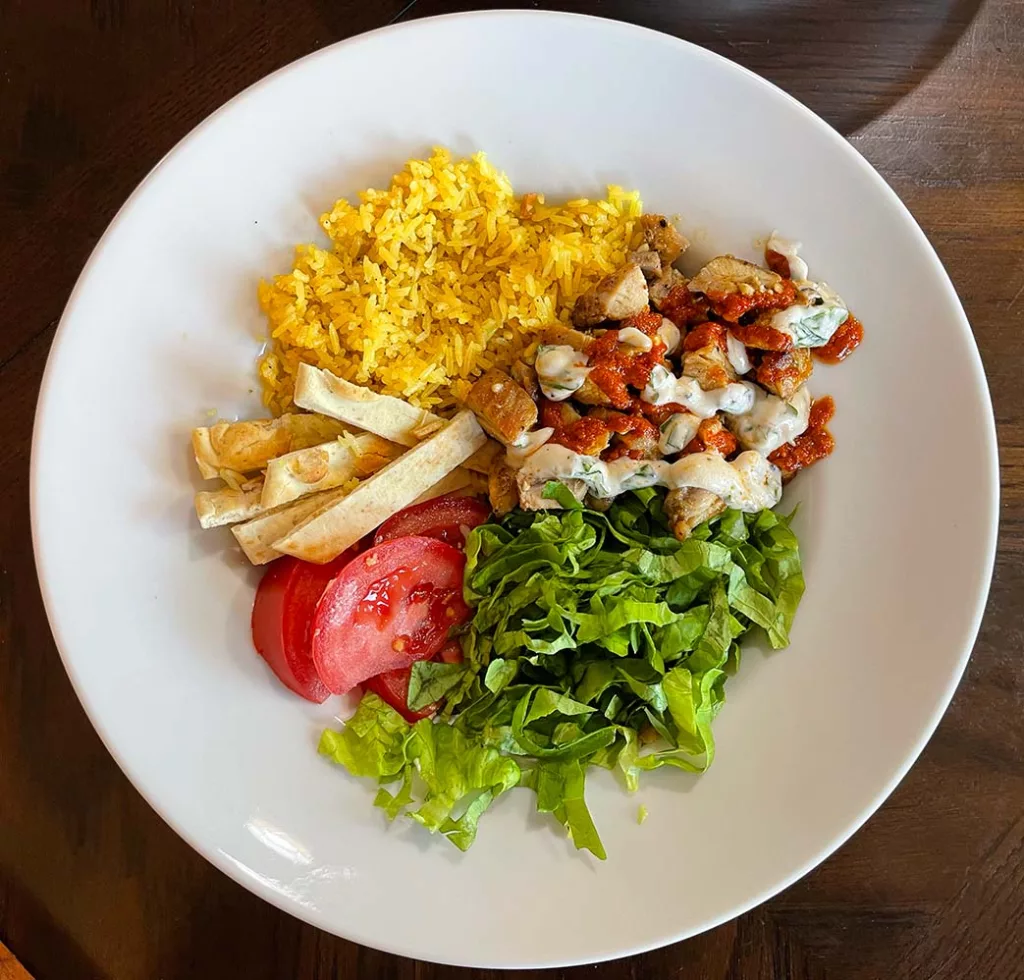
Aesthetics and Build Quality of Hast Knives
With its one-piece seamless design, Hast knives are unique and aesthetically pleasing; its sleek look will match a modern kitchen well. Colours like matte black and gold will surely stand out and be noticed.
The one-piece design also gives it an overall good build quality that eliminates points of failure; plus, without any crevices caused by seams, Hast knives are incredibly easy to clean. Just throw it in the sink, give it a few wipes, and it’s good until you need it again.
The knife is light-weight and feels balanced in the hand; surprisingly so. I personally like how light it feels in the hand, but it does rely on changing your technique a bit as there will be less gravitational force than traditional knives when cutting dense foods.
Save by Buying the 4-Piece Bundle!
• Comes with the pairing knife, utility knife, chef's knife, and serrated bread knife
• Available in four colors: minimal matte, matte black, bold gold, and absolute glossy
• Sleek and modern one-piece design will match an equally modern kitchen
Assessing the Cutting Ability of Hast Knives
Dicing Celery with Hast Knives
Slicing Leeks with Hast Knives
Chopping Spinach with Hast Knives
Soft vegetables like celery were no problem for the Hast; I was able to dice up several ribs of celery in less than a minute.
Slicing leeks was equally as easy; even the tougher dark green parts that needed to be chopped off and discarded were no problem for the Hast santoku.
The Hast santoku made its way through 3 cups of spinach easily; my only complaint is I could have used a bigger blade for this job. Luckily Hast sells an 8″ chef’s knife which would make this easy job even easier.
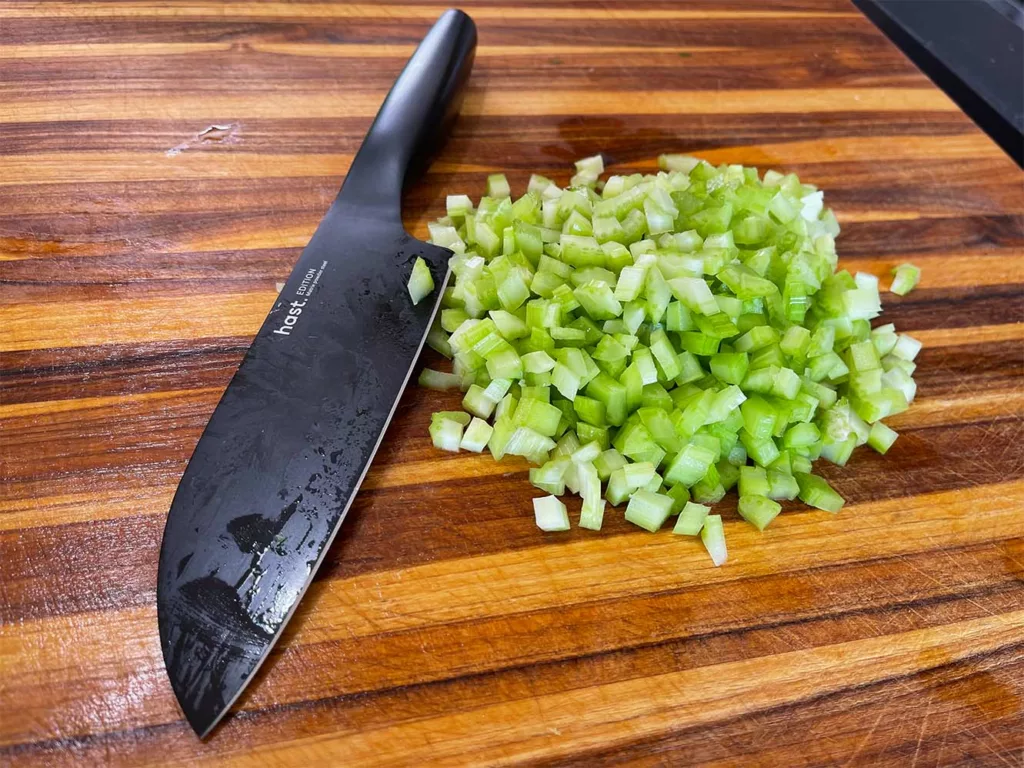
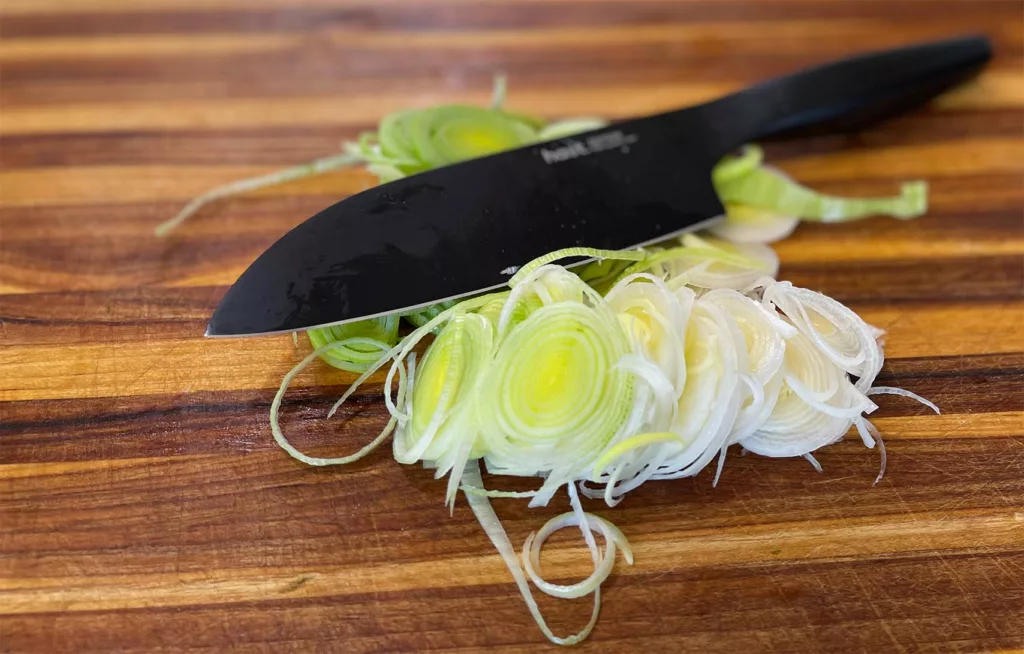
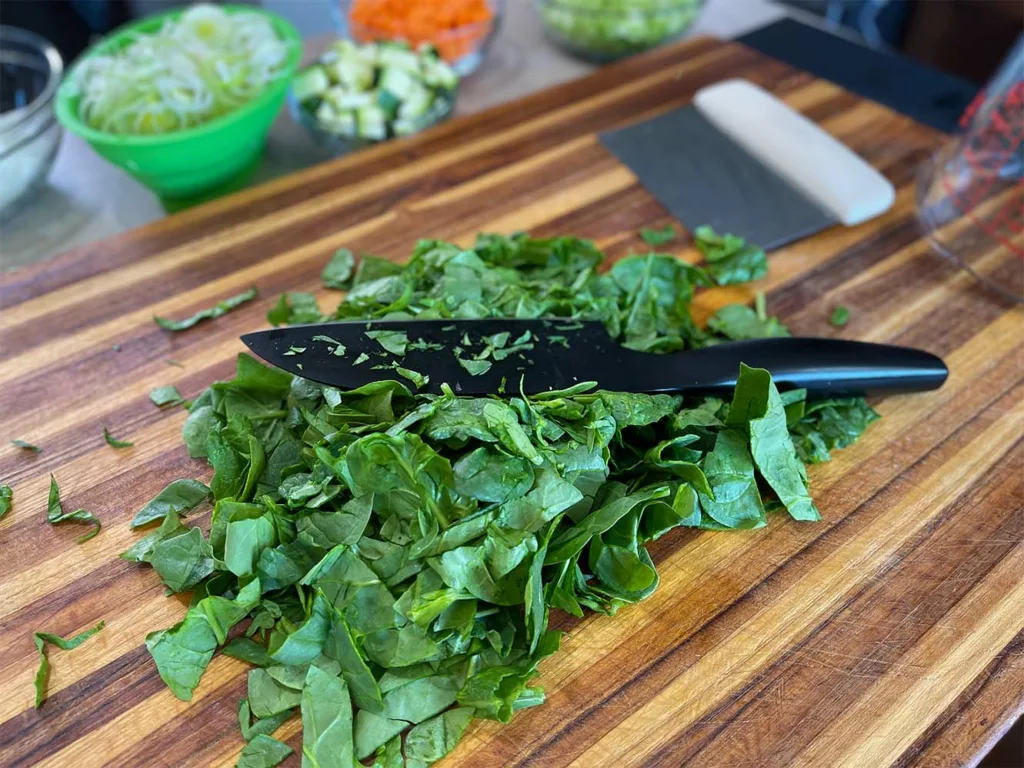
Save by Buying the 4-Piece Bundle!
• Comes with the pairing knife, utility knife, chef's knife, and serrated bread knife
• Available in four colors: minimal matte, matte black, bold gold, and absolute glossy
• Sleek and modern one-piece design will match an equally modern kitchen
Dicing Zucchini with Hast Knives
Chopping Tomatoes with Hast Knives
Not surprisingly, the Hast santoku cut through a zucchini like butter. I only ran into one minor probem; the end of blade is a little abrupt before turning into a non sharp edge. This non sharp edge tore my slices of zucchini twice; however, I eventually got the hang of cutting with the knife and was able to avoid any more tearing.
When I first cut a tomato using a Hast knife, I used the Hast utility knife and I found the experience to be underwhelming because instead of piercing the skin of the tomato, it just kind of pushed it down. However, I tried the Hast santoku and had a much better experience with just a little bit of resistance before it sliced through the skin. I discovered that because the utility knife is so light weight, you had to adjust the pressure you apply to it when cutting things like tomatoes as the knife itself is not as heavy as others. Without enough pressure, the initial piercing of the tomato skin can be difficult. That being said, tomato skins can be challenging for most knives, and I recommend using a serrated knife that will easily pierce the tomato skin at multiple points making for a much smoother cut. Luckily, Hast sells an 8″ serrated bread knife; although I didn’t get to test it personally, I’m pretty confident it would handle tomatoes with ease like my other serrated knives.
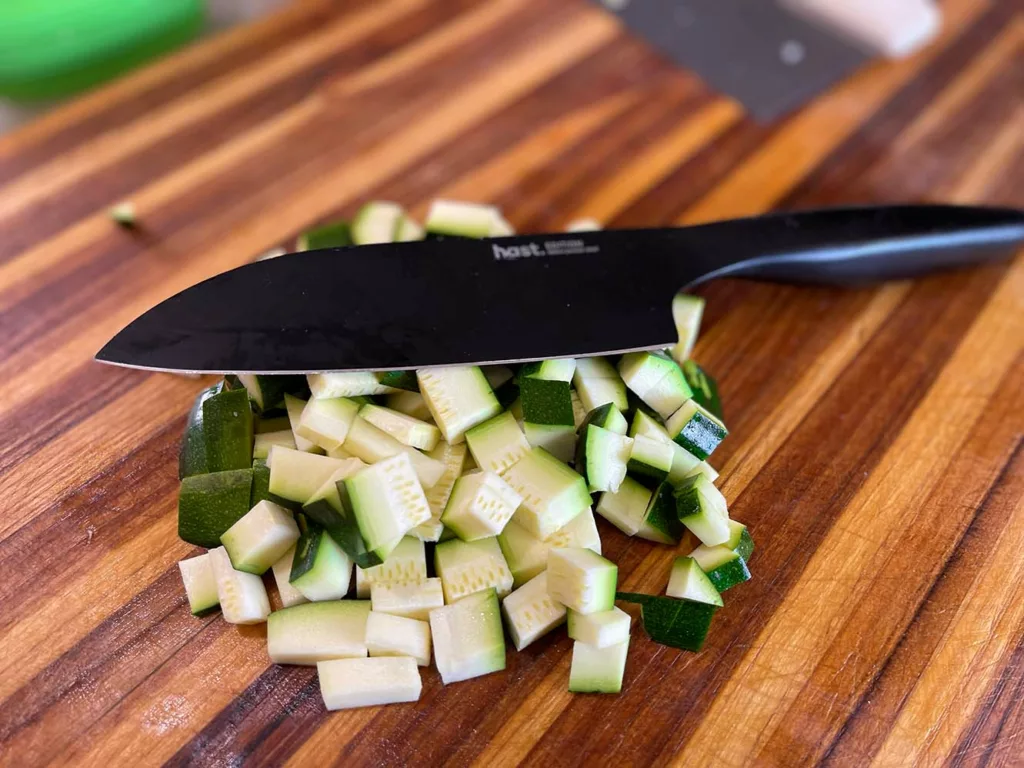
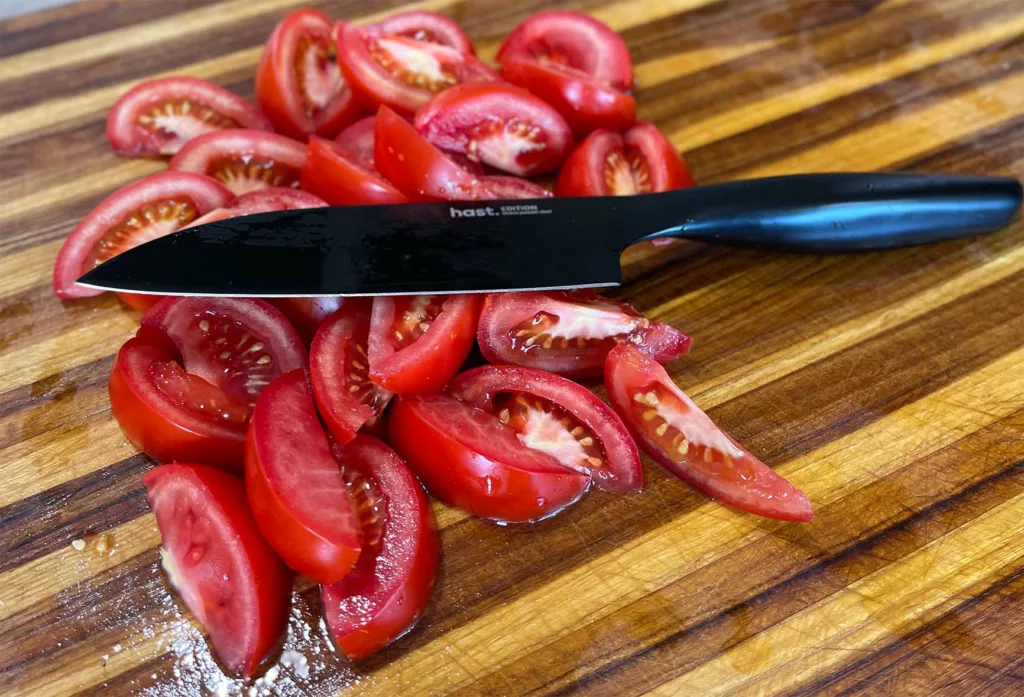
Removing the Rind from Parmesan with Hast Knives
For the minestrone soup, I had to cut the rind off a chunk of parmesan and add it to the broth. My Hast santoku handled it with ease with just a little bit of resistance. Considering parmesan is a hard cheese, the Hast did a very good job with it.
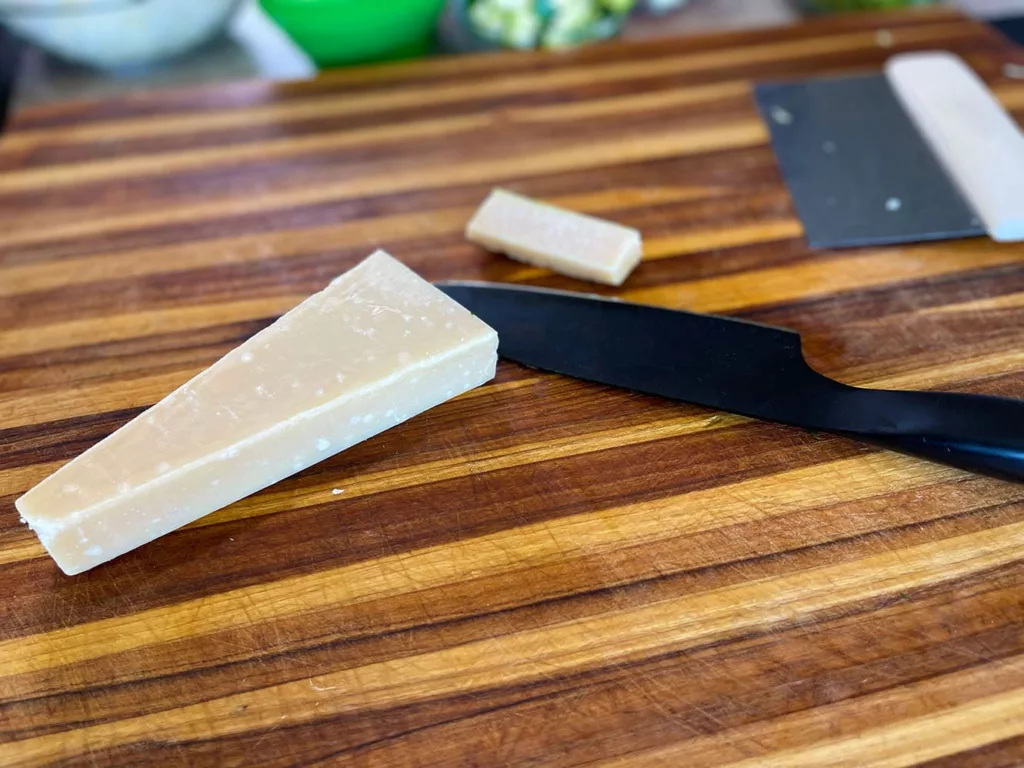
Slicing Carrots with Hast Knives
Dicing Potatoes with Hast Knives
Chopping Onions with Hast Knives
Firm vegetables like carrots, potatoes, and onions weren’t much of a challenge for the Hast santoku.
When chopping, slicing, and dicing these firm vegetables, I felt a bit more resistance than I do on my prized Japanese gyuto, but keep in mind that knife costs 4-5x as much as the Hast. For a lot of home cooks, the improvements between the Hast and a much more expensive knife could be viewed as marginal and not worth it, so it’s important to keep that in mind when shopping for knives.
Despite a bit of resistance, the Hast was able to uniformly dice these firm vegetables without ever feeling unsafe due to lack of sharpness.
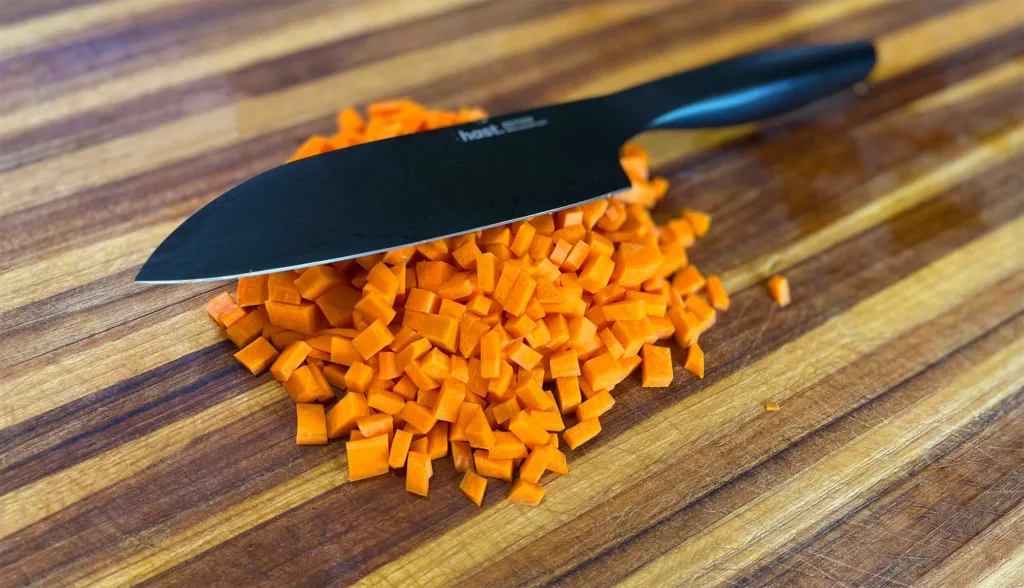
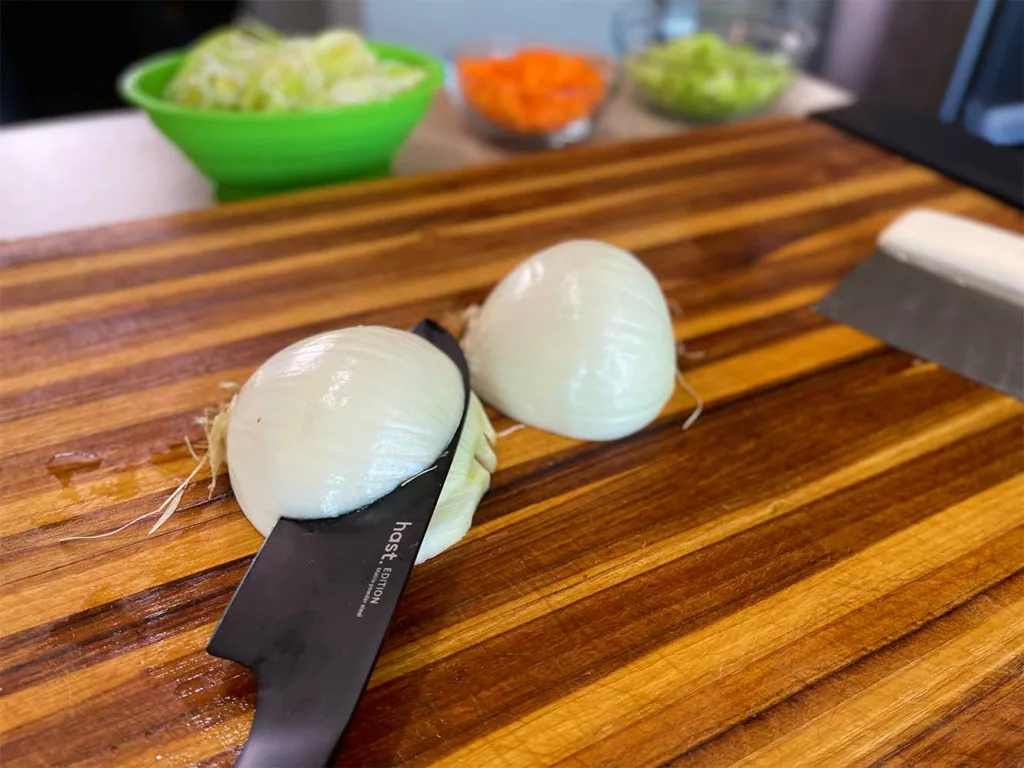
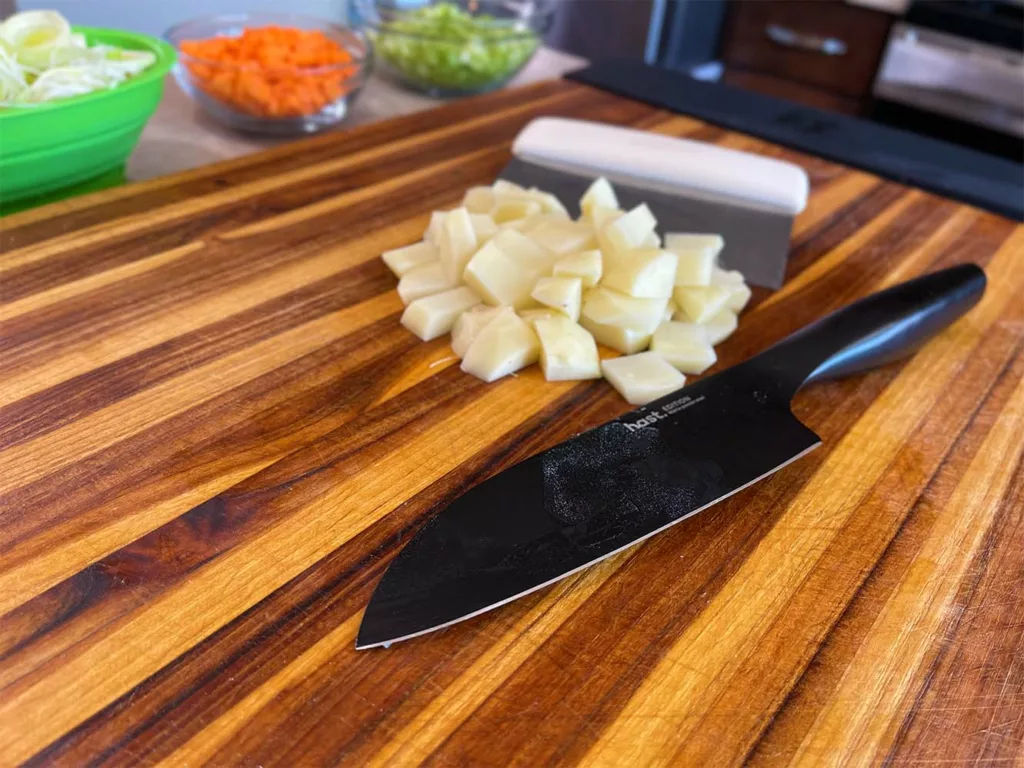
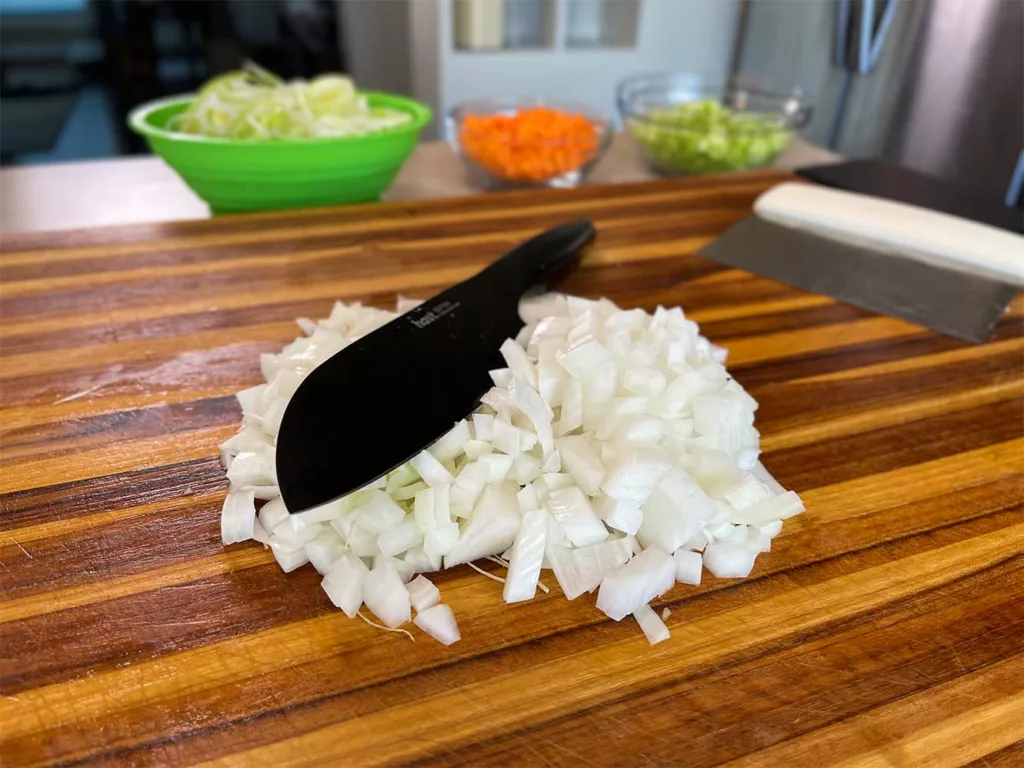
Save by Buying the 4-Piece Bundle!
• Comes with the pairing knife, utility knife, chef's knife, and serrated bread knife
• Available in four colors: minimal matte, matte black, bold gold, and absolute glossy
• Sleek and modern one-piece design will match an equally modern kitchen
Dicing Cooked Chicken with Hast Knives
Halving a Salmon with Hast Knives
The Hast santoku had no problem dicing up the cooked chicken for the Halal Cart-Style Chicken and Rice dish. I also used the Hast knife to slice the lettuce, tomatoes, and pita bread for the dish, and none of those ingredients were any challenge for the knife.
While testing the Hast santoku knife, I made myself a garden salad that I wanted to pair with some sous vide salmon. I needed to chop the salmon in half in order to fit it in my vacuum chamber, so I used this as an opportunity to test the Hast santoku with an additional protein; needless to say, it handled the salmon excellently with no resistance or tearing.
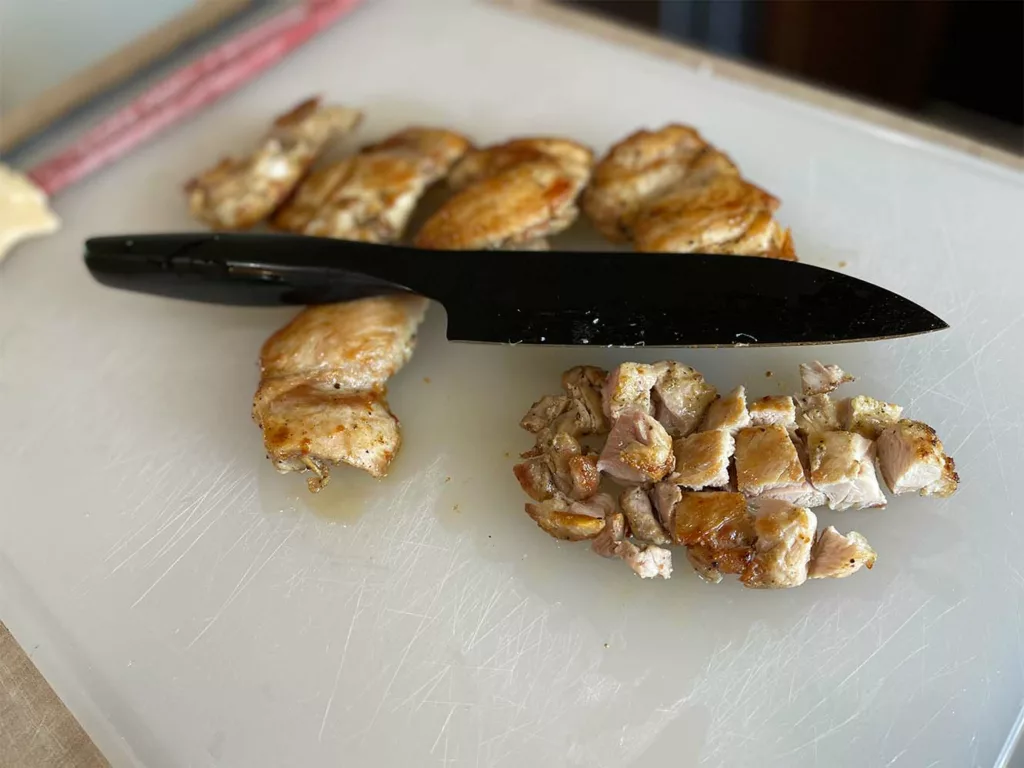

Comfort & Control of Hast Knives
I always felt like I had good control of the Hast santoku knife, and it never felt like it was going to slip away from me like some other knives I’ve tried have.
That being said, one area for improvement is in comfort; I found the handle to dig into my hand causing some minor fatigue after continuous use. However, knives are very personal and what is comfortable for one cook could be uncomfortable for another. There are lots of variables that go into the comfort of a knife, such as hand and fingers size of the user; it’s best that you try out a knife before committing to it. Luckily Hast offers a 30-day money back guarantee, so you can try it and see if it works for you.
The Verdict: The Hast Santoku is a Good Buy for Under $100
Overall, the Hast santoku got through all kitchen tasks tested and I only experienced a little resistance with some tasks. For under $100, this knife is a good deal when compared to other knives at this price point, especially if you are looking for a knife to match a modern kitchen aesthetic.
Save by Buying the 4-Piece Bundle!
• Comes with the pairing knife, utility knife, chef's knife, and serrated bread knife
• Available in four colors: minimal matte, matte black, bold gold, and absolute glossy
• Sleek and modern one-piece design will match an equally modern kitchen
